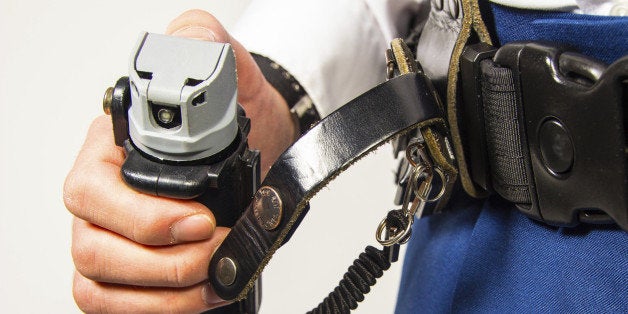
In July 2014, Youth Law Center and 10 community organizations filed a complaint with the United States Department of Justice calling for an investigation of pepper-spray use and behavior-management practices in San Diego County juvenile facilities. An analysis of 2012 to 2013 documents had revealed hundreds of incidents in which pepper spray was used -- almost exclusively on Black and Latino youth, sometimes on kids as young as 12. These were youth who wouldn't follow verbal instructions, wouldn't come out of their room, were fighting or were at risk of harming themselves -- in short, kids acting the way young people do in schools, homes and communities across America.
San Diego Probation has consistently claimed that pepper spray is needed to protect the safety of the institution, in part, because it houses youth who are more dangerous and aggressive than in the past. But nationally, the vast majority of juvenile facilities do not use pepper spray at all. A 2011 survey by the Council of Juvenile Correctional Administrators found that only 29 percent of juvenile detention centers use any pepper spray, and of those, only 12 percent allow staff to carry it on their person. And surely, San Diego's kids are no more dangerous or challenging than those in Chicago or New York City facilities, where pepper spray is not used.
Moreover, the San Diego investigation yielded evidence of pepper spray use so frequent and so callous it could not be justified on any theory of safety. It was routinely used on kids who simply failed to obey an order and kids in the midst of mental health crises. Perhaps the most disturbing incidents involved the use of pepper spray on suicidal youth. In at least a dozen incidents, suicidal youth were sprayed when they refused to kneel, change into a safety gown, or submit to a strip search. In one particularly egregious case, a girl refused to take off her clothes in front of four staff, one of whom was male. Although she was in her cell and seated on her bunk, staff determined that pepper spray was warranted. The minor continued to resist disrobing and was sprayed four separate times. Eventually, she vomited. She was commanded to crawl out of her cell and lie on her stomach. Staff cuffed her, removed her clothes, cut off her bra and shirt, strip-searched her, and dressed her in the safety gown. Because of her refusal to remove her clothes, the girl was given 48 hours of room confinement.
Pepper spray produces intense burning, swelling, redness, occasionally blistering and exacerbation of allergic reactions. Individuals with underlying health conditions such as asthma or bronchitis, cardiovascular conditions, or mental illness are at risk for serious complications from pepper spray exposure. In San Diego, the rampant use of pepper spray placed everyone at risk. It was common for non-involved youth and staff to be sprayed, and there were incidents in which more than a pound of spray was used. So much spray was used in one incident, that staff were slipping in it. Despite the health risks, parents were never informed that their child had been sprayed.
Staff in juvenile facilities have a difficult, demanding job. Young people are held in a completely unnatural setting. There are pressures on youth to "prove themselves" to avoid being targeted as "weak," and some of the pressures are gang-related. A significant proportion of incarcerated youth suffer from mental-health disorders or the cumulative effects of trauma experienced at home or in the community. Incarcerated youth are teenagers, and may exhibit the same impulsivity, moodiness and oppositional behavior known to parents everywhere. Accordingly, daily life in a juvenile facility may include fights, near fights, tantrums and suicidal behavior. But the idea that these challenges require the routine use of pepper spray is mistaken and harmful.